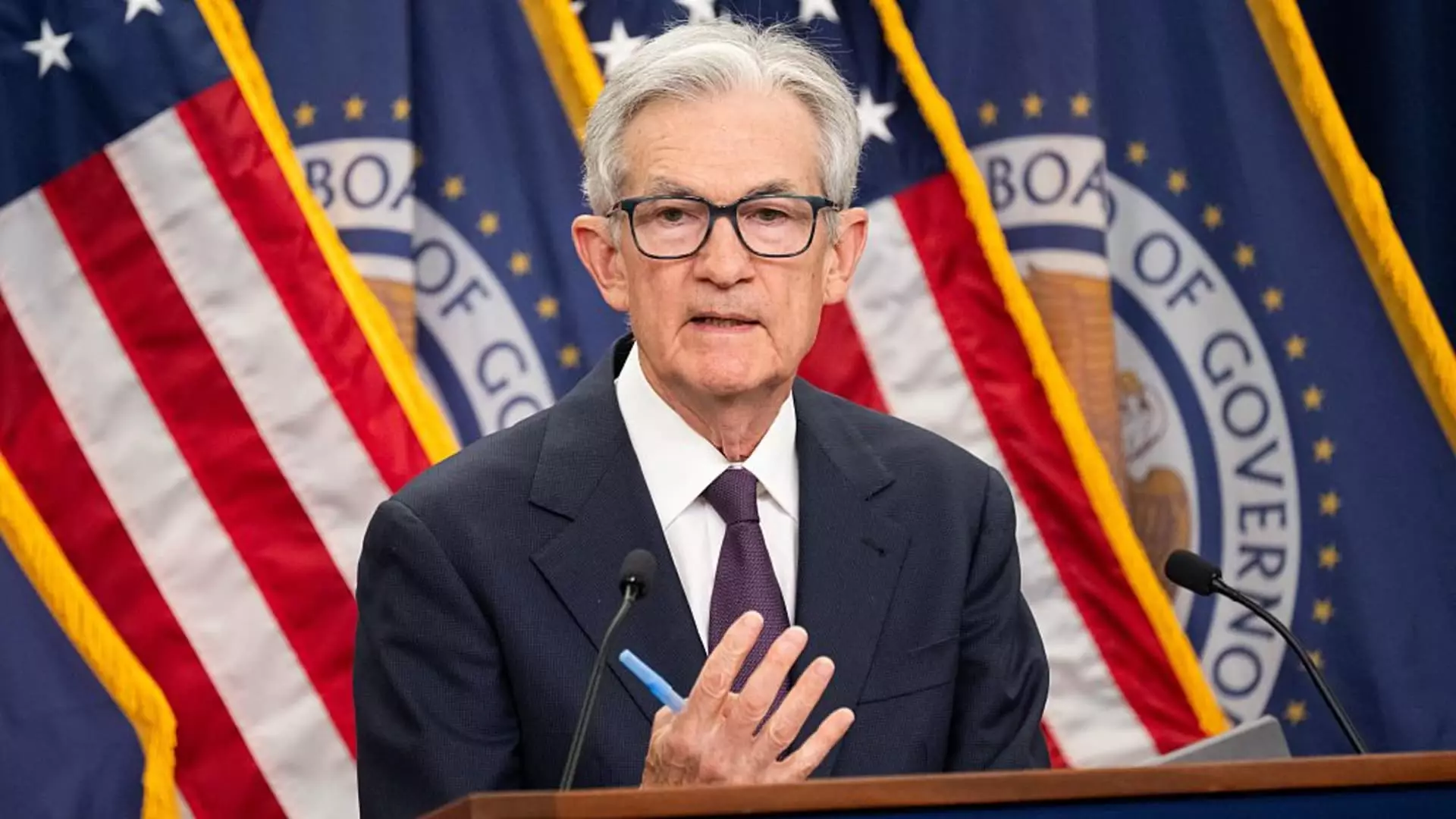In recent discussions surrounding the U.S. economy, Federal Reserve Chair Jerome Powell has attracted attention for his cautious stance on monetary policy. His comments reveal a reality that is not just about numbers; they illuminate a broader narrative about the interplay of tariffs, inflation, and economic stability. As political contexts shift, Powell’s reluctance to make definitive policy changes often leads him to the same fork in the road—a place where the Fed must carefully navigate between prompt action and measured restraint.
Powell states that inflation currently hovers above the central bank’s target of 2%, a metric that serves as a crucial benchmark for both consumers and policymakers alike. His insistence on waiting to gauge the effects of tariffs on inflation raises critical questions. Tariffs, as history indicates, have complex implications for the economy. They might generate immediate price spikes, but do they pose a greater risk of fostering long-term inflation, especially in an environment where global supply chains are increasingly fragile?
The Economic Landscape: Strong Yet Volatile
The narrative Powell weaves implies a healthy economy, where employment rates are robust and growth appears resilient. However, the conditions are nuanced. While the statistics paint a rosy picture, the heavy hand of uncertainty looms large. The question arises: Is the perceived strength of the labor market truly indicative of sustainable growth, or is it an illusion based on transient data points? Inflation metrics reflect a cycle that may be influenced more by geopolitical strategies—like tariffs—than actual economic performance.
The atmosphere in Washington feels thick with tension, particularly given President Trump’s criticisms of Powell. This ongoing animosity adds another layer to the Fed’s operations. With Trump labeling Powell’s caution as “dumb” and “hardheaded,” one can’t help but wonder if the Fed’s decisions are being tainted by political motivations rather than economic prudence. Powell’s job requires him to remain unfettered by political pressures and focused solely on the economy. But with public opinions boiling over—especially in an election year—are those mounting pressures enough to affect monetary policy?
Inflation: A Complex Puzzle
The Fed’s assessment of inflation—its preferred measure projected to ascend to 2.3%—evokes a sense of urgency. Stakeholders are aware that inflation does not merely impact aggregate economic figures; it trickles down to affect the everyday lives of citizens. When basic goods become pricier due to tariffs or other external pressures, it erodes both consumer confidence and purchasing power, ultimately creating a ripple effect throughout the economy.
Powell’s assertion that the central bank is “well positioned to wait” is a double-edged sword. This cautious optimism can be seen as wise foresight, yet it can just as easily be perceived as a lack of decisiveness. It’s a delicate dance; one misstep could send the economy spiraling. The Fed’s hesitance to act swiftly could be viewed as a neglect of their dual mandate—maintaining maximum employment while controlling inflation—it brings into question whether their policy framework is agile enough to adapt to rapidly shifting economic realities.
The Future: Data-Driven Decisions and Divergent Opinions
The recent FOMC meeting, where the committee unanimously decided to maintain steady rates, reveals the stark differences in perspectives among board members. This split emphasizes the contentious nature of economic forecasting, where some members envision rate cuts drenched in optimism, while others remain committed to a more conservative approach. If Powell’s narrative teaches us anything, it’s that predictions about future economic conditions are often muddied by subjective opinions and external variables.
Amid these contrasting viewpoints among Fed officials, the probabilities of rate cuts further twist the narrative. The market’s skepticism about immediate cuts speaks volumes—showing a preference for a wait-and-see approach. Still, when contemplating the nuanced relationship between inflationary pressures and federal policies, the grim reality is that we remain at the mercy of broader economic forces that are consistently in flux.
In this rapidly evolving landscape, it’s vital for policymakers to anchor their decisions on a fundamental understanding of economic dynamics rather than just responding to the pressures of the moment. The stakes are as high as ever, and as the Fed continues to analyze data amidst political turbulence, the path forward remains fraught with uncertainty and complexity.

